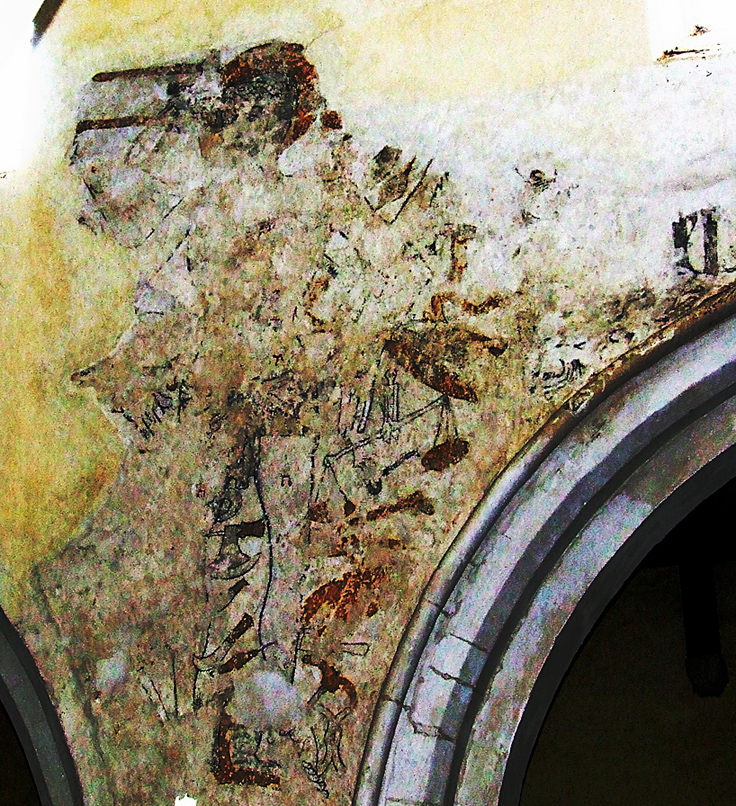Nether Wallop Hampshire (†Winchester) C.15
The Warning to Sabbath Breakers

Christ stands centrally, as usual with this subject. Both his arms are raised and he would once have been surrounded by various tools of various trades. Many of these are impossible to identify now, but some light is shed on them by the following extract.
The information following is from the Nether Wallop website – “Between Our Lord’s feet is a plough, which divides the stubble from the furrows; by his left foot millwrights’ tools and a mill-rind; between Our Lord’s legs, cobblers’ tools, an awl and a knife; above these, a slater's zax and a horseshoe; by His left hand a trader’s scales and quern; at His left shoulder a saw and a bobbin of yarn and above His right shoulder, what are thought to be the tools of a forester, an axe, a catapult and a net. The best position to view this mural is to stand at the east end of the north aisle, beneath the white marble wall tablet to Francis Gosling. A miller’s mill-rind is the central part of the upper mill wheel made of wrought iron, which secures the stone wheel to the vertical driving shaft. As a rebus, the mill-rind was used by the Miller family in their coat of arms. They may be seen on two ledger stones in the chancel”. I can no longer see the plough, but the mill-rind is the curiously shaped object to the immediate (onlooker’s) left of the arch shown at the bottom of this photograph.

Following this link will take you to a photograph of a mill-rind being used, and to the right is one represented heraldically on the arms of Sir William Sansum. They seem to have come in various shapes and sizes, and there are other mill-rinds surrounding Christ in the examples of this subject at Breage (between Christ’s legs at knee level) and St Just-in-Penwith (the hollow square object just above Christ’s right elbow), both in Cornwall. No doubt there were once many more. I have long been puzzled about this piece of machinery, and it is useful to have its purpose finally made clear. Ubiquitous in the English landscape, the mill and its component parts would have been an obvious choice to make clear to an illiterate populace the iniquity of working on the Lord’s day.
† in page heading = Diocese